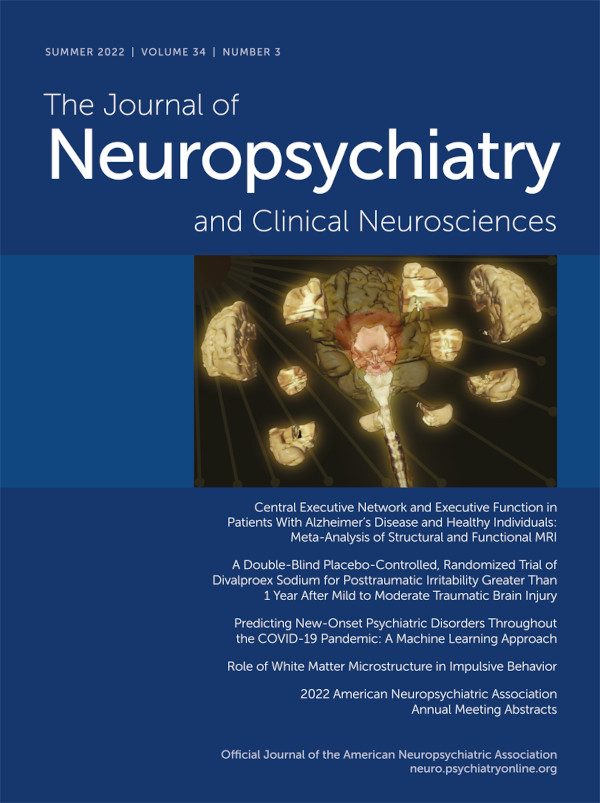Central Executive Network and Executive Function in Patients With Alzheimer’s Disease and Healthy Individuals: Meta-Analysis of Structural and Functional MRI
Abstract
Objective:
The neural architecture of executive function is of interest given its utility as a transdiagnostic predictor of adaptive functioning. However, a gap exists in the meta-analytic literature assessing this relationship in neuropsychiatric populations, concordance between structural and functional architecture, and the relationship with neuropsychological assessment of executive function. Given the importance of the central executive network (CEN) in Alzheimer’s disease, this population may be useful in understanding this relationship in Alzheimer’s disease pathology.
Methods:
A meta-analysis of studies (k=21) was conducted to elucidate the relationship between executive function and CEN for structural architecture (k=10; N=1,027) among patients with Alzheimer’s disease (k=6; N=250) and healthy control subjects (HCs) (k=4; N=777) and for functional architecture (k=11; N=522) among patients with Alzheimer’s disease (k=6; N=306) and HCs (k=5; N=216). Random-effects modeling was used to increase accuracy of conclusions about population means.
Results:
Analyses revealed a positive brain-behavior relationship (pr=0.032, 95% CI=0.07, 0.54), although there was a lack of statistically significant heterogeneity between functional and structural neuroimaging (Q=9.89, p=0.971, I2=0.00%) and between the Alzheimer’s and HC groups in functional (Q=8.18, p=0.612, I2=0.00%) and structural (Q=1.60, p=0.996, I2=0.00%) neuroimaging. Similarly, a lack of statistically significant heterogeneity was revealed between functional and structural neuroimaging among patients with Alzheimer’s disease (Q=3.59, p=0.980, I2=0.00%) and HCs (Q=3.67, p=0.885, I2=0.00%).
Conclusions:
Structural and functional imaging in the CEN are predictive of executive function performance among patients with Alzheimer’s disease and HCs. Regardless of how the CEN is affected, behavior is correlated to the degree to which the CEN is affected. Findings are significant in the context of methodological decisions in multimodal neuroimaging research.



